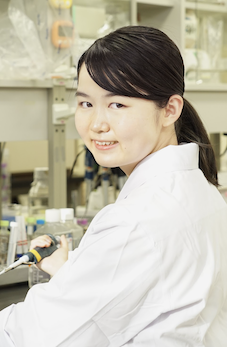
Comprehensive analysis of lysosomal enzyme expression in human amniotic epithelial cells to explore their therapeutic potential for inherited metabolic disorders
Millei Kaga1, Chika Takano2,3, Yutaka Furuta4, Isamu Taiko1, Toshio Miki1.
1Department of Physiology, Nihon University School of Medicine, Tokyo, Japan; 2Division of Microbiology, Department of Pathology and Microbiology, Nihon University School of Medicine, Tokyo, Japan; 3Department of Pediatrics and Child Health, Nihon University School of Medicine, Tokyo, Japan; 4Department of Pediatrics, Division of Medical Genetics and Genomic Medicine, Vanderbilt University Medical Center, Nashville, TN, United States
Background: Lysosomal storage diseases (LSDs) represent a group of over 70 genetically distinct disorders caused by deficiencies in lysosomal enzymes essential for cellular metabolism. These deficiencies lead to the accumulation of undegraded substrates and result in progressive, multisystemic organ dysfunction. While recent advances in enzyme replacement therapy (ERT) have improved outcomes for select LSDs, such therapies require lifelong administration and are available for only a limited subset of disorders. Since the 1980s, human amnion has been explored as a potential therapeutic source. More recently, human amniotic epithelial cells (hAECs) have gained attention due to their immunomodulatory properties, expression of immune-privileged molecules, lysosome-rich characteristics, and low tumorigenicity. These features position hAECs as a promising candidate for cell-based therapy. In this study, we aimed to conduct a comprehensive analysis of lysosomal enzyme expression in hAECs to explore their therapeutic potential for LSDs.
Materials and Methods: With IRB approval (RK-220412-6), hAECs were isolated from term placentas obtained via elective Caesarean sections. Cells were cultured on glass-bottom dishes for histological analysis using lysosome-specific fluorescent staining. After 7 days in vitro, RNA-seq and tandem mass tag (TMT)-based proteomic analysis were performed. Expression profiles of 42 LSD-associated genes were compared among hAECs, human fibroblasts (hFibs), and human mesenchymal stem cells (hMSCs) derived from bone marrow, adipose tissue, and umbilical cord. Protein expression of LSD-related enzymes was assessed using proteome data, and selected targets were validated by immunocytochemistry and Western blotting.
Results: Fluorescence imaging confirmed that hAECs contain abundant acidic lysosomes, as indicated by pH-sensitive co-localization signals. All LSD-associated genes were detectably expressed in hAECs, with many showing higher expression than in hFibs and hMSCs. Proteomic analysis identified 15 out of the 42 LSD-related proteins in hAECs, including key enzymes such as GAA, GBA1, and HEXB. Notably, PSAP (prosaposin), a precursor of saposins A–D that support lysosomal lipid-degrading enzymes, showed the highest protein expression level in hAECs.
Discussion: hAECs exhibit an abundance of acidic lysosomes and express all major LSD-associated genes, with elevated expression levels of several related mRNAs and proteins compared to other cell types. The lysosome-rich phenotype of hAECs, together with their unique characteristic of low immunogenicity, highlights their strong potential as a cell-based therapy for a broad spectrum of LSDs.